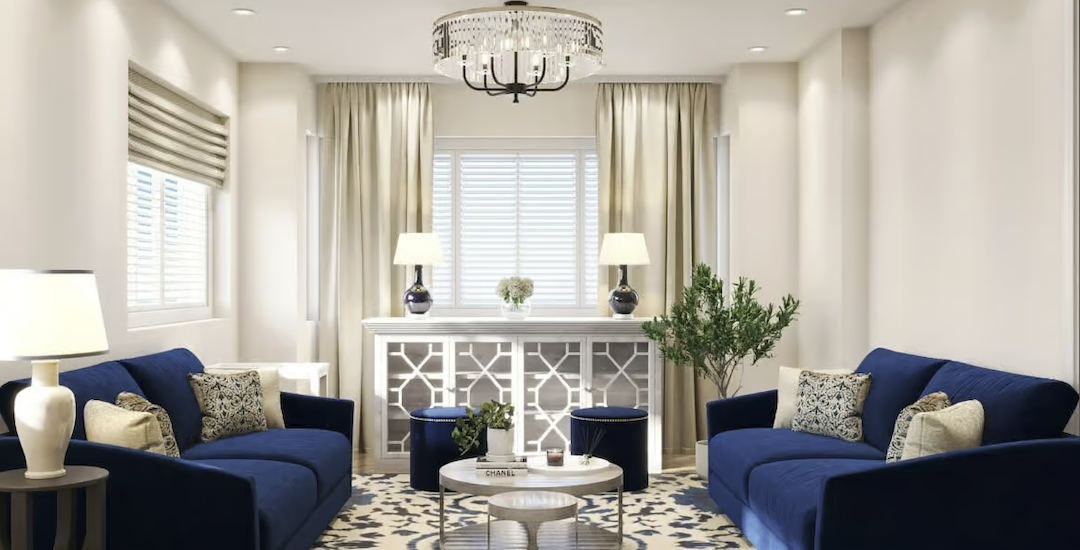The French chandelier is more than just a lighting fixture; it is a statement piece that embodies elegance, sophistication, and a rich cultural heritage. Originating from France, these ornate fixtures have graced the ceilings of palaces, grand ballrooms, and luxurious homes for centuries. Characterized by their intricate designs, sparkling crystals, and elaborate craftsmanship, French chandeliers serve as a focal point in any room, particularly in living spaces where they can enhance the overall aesthetic.
The allure of a French chandelier lies not only in its beauty but also in its ability to transform the ambiance of a room, creating an inviting atmosphere that captivates guests and residents alike. The charm of a French chandelier extends beyond its visual appeal; it also carries with it a sense of history and tradition. Each chandelier tells a story, reflecting the artistic movements and cultural influences of its time.
From the opulent designs of the Baroque period to the more minimalist styles of the modern era, French chandeliers have evolved while maintaining their core essence. This article delves into the fascinating history of French chandeliers, offers guidance on selecting the perfect piece for your living room, and provides tips on installation and maintenance, ensuring that your chandelier remains a stunning centerpiece for years to come.
History of French Chandeliers
The history of French chandeliers can be traced back to the medieval period when simple wooden or iron fixtures were used to hold candles. These early designs were functional rather than decorative, serving primarily to illuminate dark spaces. However, as the Renaissance swept through Europe in the 15th and 16th centuries, the demand for more elaborate lighting fixtures grew.
Artisans began to experiment with new materials and designs, leading to the creation of more ornate chandeliers that reflected the wealth and status of their owners. By the time of the Baroque period in the 17th century, French chandeliers had reached new heights of opulence. The use of crystal became increasingly popular, particularly after the establishment of glassworks in regions like Lorraine and Baccarat.
These artisans mastered the art of glassmaking, producing exquisite crystal pieces that would later adorn chandeliers. The Palace of Versailles, with its grand halls and lavish decor, became a symbol of this era’s extravagance. The Hall of Mirrors, in particular, showcased an impressive array of chandeliers Sutradecor that sparkled under the light of countless candles, creating a breathtaking spectacle that epitomized the grandeur of French design.
As time progressed into the 18th century, the Rococo style emerged, characterized by its playful and ornate designs. Chandeliers from this period often featured intricate motifs inspired by nature, such as flowers and leaves, and were adorned with colorful glass elements. The craftsmanship reached new levels of sophistication, with artisans employing techniques like cut glass and gilding to enhance their creations.
The influence of these historical periods can still be seen in contemporary designs, as modern artisans draw inspiration from the past while incorporating innovative materials and technologies.
Choosing the Right Chandelier for Your Living Room
Selecting the perfect chandelier for your living room involves careful consideration of various factors, including size, style, and functionality. The first step is to assess the dimensions of your space. A chandelier that is too large can overwhelm a room, while one that is too small may get lost among other furnishings.
A general rule of thumb is to add the length and width of the room in feet; this total will give you an approximate diameter for your chandelier in inches. For example, if your living room measures 15 feet by 20 feet, a chandelier with a diameter of around 35 inches would be appropriate. Once you have determined the size, consider the style that best complements your existing decor.
French chandeliers come in a variety of designs, from traditional to contemporary. If your living room features classic furnishings with rich fabrics and ornate details, a traditional crystal chandelier with intricate metalwork may be ideal. Conversely, if your space leans towards a more modern aesthetic with clean lines and minimalistic decor, you might opt for a sleek chandelier with geometric shapes or a more understated design that still retains a hint of elegance.
Another important aspect to consider is the type of lighting you desire. Chandeliers can serve as both ambient and task lighting, depending on their placement and design. If your living room is primarily used for entertaining or socializing, you may want a chandelier that provides ample light while also creating a warm atmosphere.
On the other hand, if you envision your living room as a cozy retreat for reading or relaxation, consider a chandelier with adjustable brightness or one that can be paired with dimmer switches to create varying moods throughout the day.
Installing and Maintaining Your French Chandelier
Installing a French chandelier requires careful planning and execution to ensure both safety and aesthetic appeal. Before beginning the installation process, it is essential to turn off the power at the circuit breaker to avoid any electrical hazards. If you are not comfortable working with electrical wiring or if your chandelier is particularly heavy or complex, it may be wise to hire a professional electrician to handle the installation.
Once you have ensured safety measures are in place, begin by determining the optimal height for your chandelier. A common guideline is to hang it approximately 30 to 36 inches above dining tables or coffee tables to allow for comfortable conversation without obstructing views. In living rooms with high ceilings, consider hanging the chandelier lower to create an intimate atmosphere while still allowing for adequate clearance for taller individuals.
Maintenance is crucial for preserving the beauty and functionality of your chandelier over time. Regular cleaning is necessary to prevent dust and grime from accumulating on the crystals and metalwork. Use a soft cloth or feather duster to gently wipe down surfaces; for more thorough cleaning, consider using a mixture of warm water and mild soap.
Avoid harsh chemicals that could damage delicate finishes or crystal elements. Additionally, check periodically for loose crystals or connections to ensure that your chandelier remains secure and safe.
Tips for Decorating Around Your Chandelier
Decorating around your French chandelier can enhance its visual impact while creating a cohesive design within your living room. One effective approach is to consider the color palette of your space. A chandelier with crystal elements can reflect light beautifully; therefore, incorporating complementary colors in your furnishings and decor can create harmony throughout the room.
For instance, if your chandelier features warm amber tones in its crystals, consider using similar hues in throw pillows or artwork to tie everything together. Another way to accentuate your chandelier is by using layered lighting throughout the room. In addition to your chandelier, incorporate floor lamps or table lamps that provide softer lighting options for different occasions.
This layering creates depth and dimension within your space while allowing you to adjust lighting levels based on mood or activity. Additionally, consider using mirrors strategically placed around the room; they can reflect light from the chandelier and create an illusion of greater space while enhancing its brilliance. When arranging furniture around your chandelier, ensure that it remains a focal point without being obstructed by large pieces.
Create an open layout that allows for easy movement while drawing attention to this stunning fixture. If you have high ceilings, consider using tall plants or decorative elements that reach upward to complement the verticality of your chandelier without competing for attention.
The Impact of a French Chandelier on Your Living Room
The presence of a French chandelier can dramatically alter the atmosphere of your living room. Its ability to serve as both a functional light source and an artistic centerpiece makes it an invaluable addition to any space. When properly chosen and installed, a chandelier can evoke feelings of luxury and refinement while also providing practical illumination for everyday activities.
Moreover, chandeliers often become conversation starters among guests. Their intricate designs and sparkling crystals draw attention and admiration, making them an integral part of social gatherings. A well-placed chandelier can elevate even casual get-togethers into elegant affairs simply by setting an inviting tone through its warm glow and stunning presence.
In addition to enhancing aesthetics and ambiance, a French chandelier can also increase property value. Potential buyers often view such fixtures as desirable features that signify quality craftsmanship and attention to detail within a home. Investing in a beautiful chandelier not only enriches your living space but can also yield returns should you decide to sell your property in the future.
Different Styles of French Chandeliers
French chandeliers come in an array of styles that cater to diverse tastes and interior design preferences. One prominent style is the classic crystal chandelier, often associated with opulence and grandeur. These fixtures typically feature cascading crystals that refract light beautifully, creating dazzling displays throughout the room.
They are commonly found in traditional homes or formal dining areas where elegance is paramount. Another popular style is the rustic or farmhouse chandelier, which embraces natural materials such as wood or wrought iron combined with glass elements. These chandeliers exude warmth and charm while maintaining an air of sophistication.
They are ideal for spaces that prioritize comfort without sacrificing style—perfect for modern homes that blend contemporary design with traditional influences. For those who prefer minimalist aesthetics, contemporary French chandeliers offer sleek lines and innovative designs that focus on simplicity while still making a bold statement. These fixtures often utilize materials like metal or glass in unique configurations that challenge conventional notions of what a chandelier should look like.
They are well-suited for modern living rooms where clean lines dominate.
The Timeless Elegance of French Chandeliers
French chandeliers represent more than mere lighting; they encapsulate centuries of artistry and craftsmanship that continue to inspire designers today. Their ability to adapt across various styles—from traditional opulence to modern minimalism—ensures their relevance in contemporary interiors while preserving their historical significance. Incorporating a French chandelier into your living room not only enhances its aesthetic appeal but also creates an inviting atmosphere that encourages connection among family and friends.
As you explore different styles and options available on today’s market, remember that each piece carries with it a legacy steeped in culture and artistry—a timeless elegance that will undoubtedly enrich your home for generations to come.






